Get PeakVisor App
Sign In
Search by GPS coordinates
- Latitude
- ° ' ''
- Longitude
- ° ' ''
- Units of Length

Yes
Cancel
Share ×

Scan the QR code and open PeakVisor on your phone
❤ Wishlist ×
Choose
Delete
Bavarian Forest National Park is a large protected forest located in the southeastern region of Germany in the Free State of Bavaria. Together with Šumava National Park, the region is home to the largest continuous forest in central Europe. There are 57 named mountains in the park, the tallest and most prominent of which is Großer Rachel. The peak has an elevation of 1,435 m (4,708 ft) and a prominence of 499 m (1,637 ft).
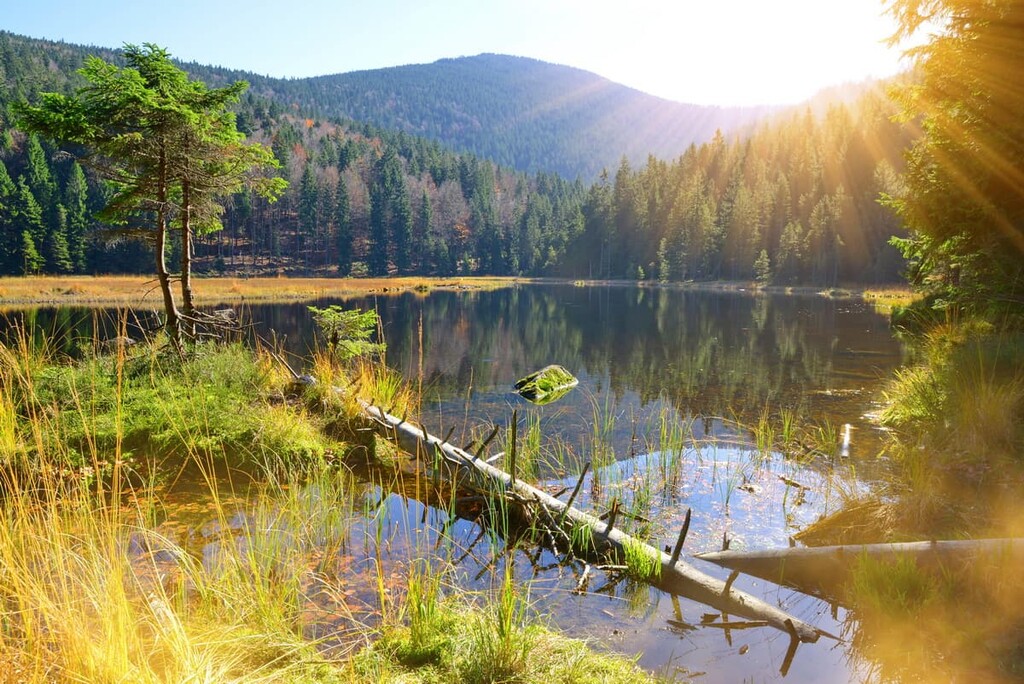
Bavarian Forest National Park (Nationalpark Bayerischer Wald) is located in the southeastern part of Germany in the Free State of Bavaria. The forest is located within the districts of Freyung-Grafenau and Regen along the country’s border with the Czech Republic.
The park encompasses 243 sq. km (94 sq. mi) of land in the Eastern Bavarian Forest, which is a large wooded region that coincides with the Bohemian Forest in Czechia.
Bavarian Forest National Park is just one of the many protected areas in the Bavarian and Bohemian forests, which are the largest contiguous areas of woodlands in Central Europe. Other protected areas in the region include the Bavarian Forest Nature Park, the Upper Bavarian Forest Nature Park, and the Šumava National Park, the latter of which is in Czechia.
True to its name, Bavarian Forest National Park contains large swaths of forested land. Amidst the forest lie numerous raised bog sections. While alpine lakes can also be found within the low elevation range, it is more common for hikers to come across bog lakes, which are a type of wetland. The bog lakes that are present throughout the park were once home to high meadows.
The Bohemian massif (Český masiv or Böhmische Masse) is the primary mountain range within the park. The range is located within close proximity of a number of other mountain ranges, including the Ore Mountains, Bohemian-Moravian Highlands, and the Sudetes. Lookout towers accompanied by grassy summits throughout the park allow for spectacular views of the region as well as of Šumava National Park.
Today, the largest river in the region is the Regen. Various smaller streams can be found in the park, too, most of which travel westward.
Bavarian Forest National Park is located near various other parks and protected areas. Directly east lies Šumava National Park in the Czech Republic, while Berchtesgaden National Park and Östliche Chiemgauer Alpen lie to the southwest.
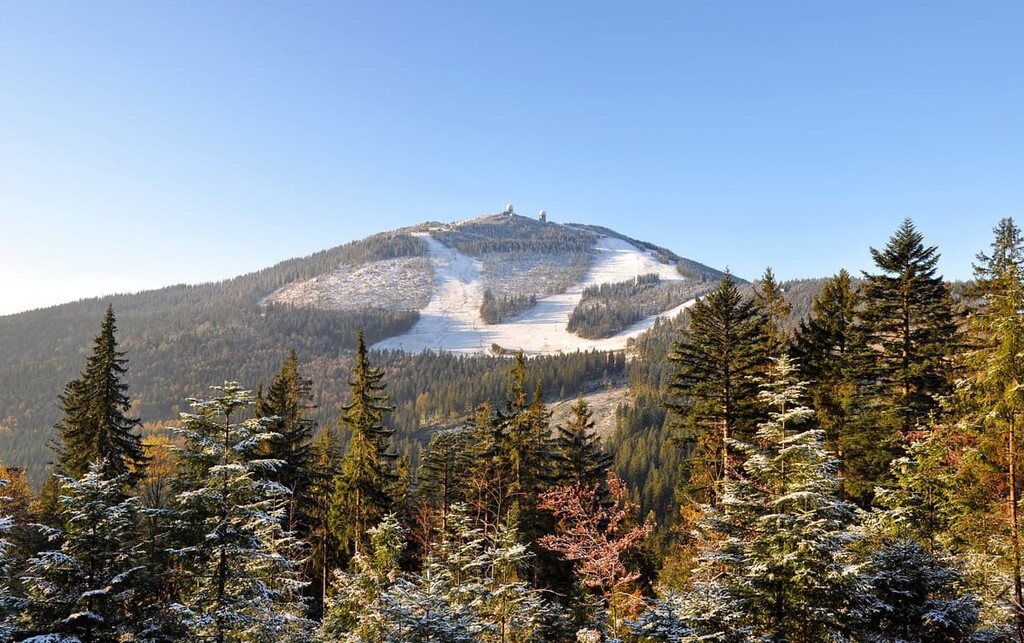
The geological history of the park dates back 250 million years. The Variscan Orogeny is responsible for the formation of the Bohemian massif, which is the primary mountain range in the park.
The closing of the Rheic Ocean and continual collision of tectonic plates led to the uplift of the massif into the range we know of today. Volcanic activity, along with millions of years of erosion, resulted in the formation of the summits in the park.
Both Mesozoic and Cenozoic formations can be found throughout western Czech Republic and eastern Bavaria. Faulting during the Alpine orogeny led to further formation of the region and the uplift of the peaks in the park.
Interestingly, unlike many other nearby ranges, such as the Ore Mountains, the peaks of the Bohemian massif are not particularly rich in valuable minerals. However, there are a number of sizable granite, diorite, and granodiorite quarries within the Bohemian massif.
Major peaks within the park include Plechý / Plöckenstein, A. Stifter - Dachl, Plattenhausenriegel, Nad Rakouskou loukou, Smrčina / Hochficht, and Lackenberg.
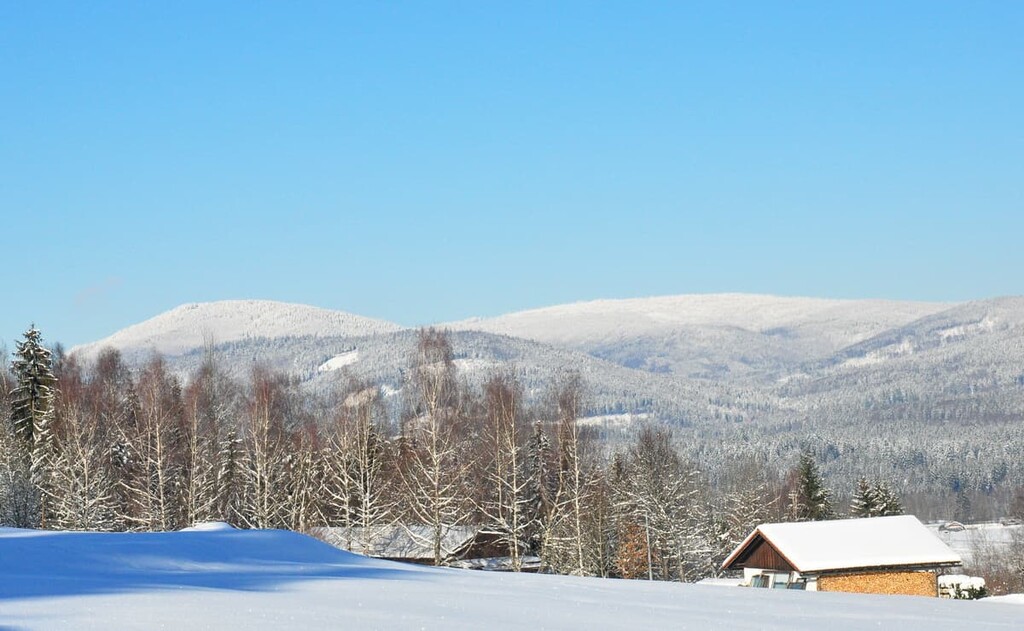
Because the land that is now part of Bavarian Forest National Park is relatively undeveloped, the park is home to a diversity of plant and animal species.
In particular, the Eurasian lynx was reintroduced to the park in the 1970s after being eradicated during the eighteenth century. However, after an initial steady rise, the lynx population has been on a decline for the past decade.
Other animals found in the park include beavers, wildcats, Eurasian otters, as well as numerous species of bats. Populations of red deer continue to thrive and small populations of moose have been spotted within the park.
The treetops within Bavarian Forest National Park are home to a variety of birds. Some of the more common species include peregrine falcon, black stork, Eurasian pygmy owl, hazel grouse, and capercaillie.

The forested regions of the park consist primarily of spruce, beech, and fir trees. However, it is not uncommon to find sycamore, linden, maple, and ash trees, too. The fields in the park are home to mountain tassel flowers and leathery moonwort.
An estimated 40 percent of all the mosses found in Germany can be spotted within the park boundaries. Depending on the landscape, the park is home to both brittle moss and soft bog-moss.
Humans have inhabited the region surrounding Bavarian Forest National Park for thousands of years. These initial groups of people lived in small settlements often near the rivers that run through the park.
Just west of the park, it is believed that the first settlers were gold miners. Towns near the park date back to the twelfth century and were often located along trading routes used to travel to and from Bohemia.
Mining in the region officially began around the sixteenth century. The region also developed fairly strong glassmaking and logging industries, some of which continue to this day.
During World War II, the nearby town of Zwiesel was bombed, resulting in destruction to numerous buildings as well as the death of over a dozen civilians.
In order to protect this massive contiguous forest, Bavarian Forest National Park was established in 1970, making it Germany’s first national park. It is currently the second largest terrestrial national park in the country after Müritz National Park in the state of Mecklenburg-Vorpommern.
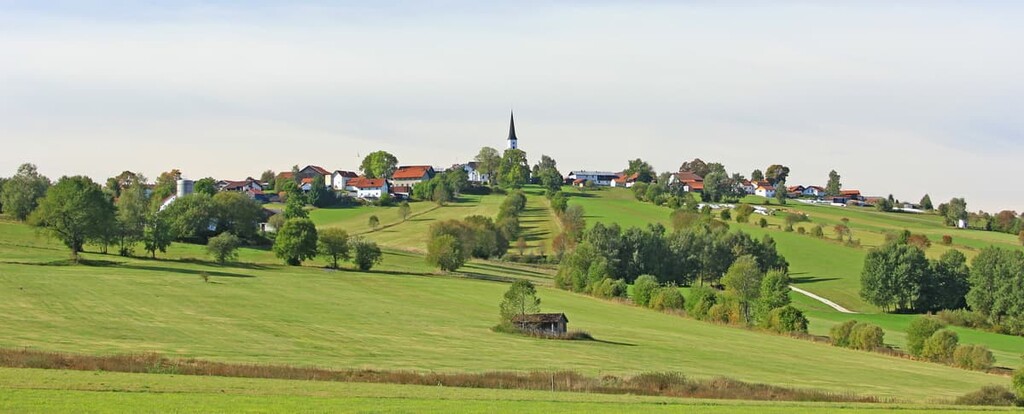
After hundreds of years of logging, the forest has been left to restore itself without much human development. As such, it is a haven for wildlife and plant species, though regulations preventing human intervention have also been controversial in recent years due to an increase in bark beetle infestations. Regardless, Bavarian Forest National Park remains a popular destination for people looking to venture into the heart of one of Central Europe’s largest forests.
Bavarian Forest National Park is home to numerous trails for hiking and backpacking. Here are some of the most popular trails in the park:
The Rachelrundweg route allows visitors to reach the summit of the tallest peak in the park; Großer Rachel. The loop trail is 11.4 km (7.1 miles) long with 571 m (1,873 ft) of elevation gain.
The trail climbs steadily through the forest before passing Rachelsee Lake. A small structure stands above the lake, allowing for a different viewpoint of the scenery. The route then climbs up to the summit of Großer Rachel which offers unobstructed views of the surrounding park.

The Lusen Rundweg trail is a loop totaling 9.2 km (5.7 miles) long with 378 m (1,240 ft) of elevation gain. The trail offers impressive views of the forest as it slowly recovers from the invasive bark beetles.
Besides a forested landscape, the route also passes across massive rock fields, which are uncharacteristic of the region. The rocky summit of Lusen allows for views of the surrounding peaks and small villages.
The Lusen ab Finsterau is another loop trail located just outside of Finsterau. The route is 13.5 km (8.4 miles) long with 573 m (1,879 ft) of elevation gain.
This trail offers a different approach up to the summit of Lusen. On the descent back into town, the trail passes along the summit of Hohlstein as well.
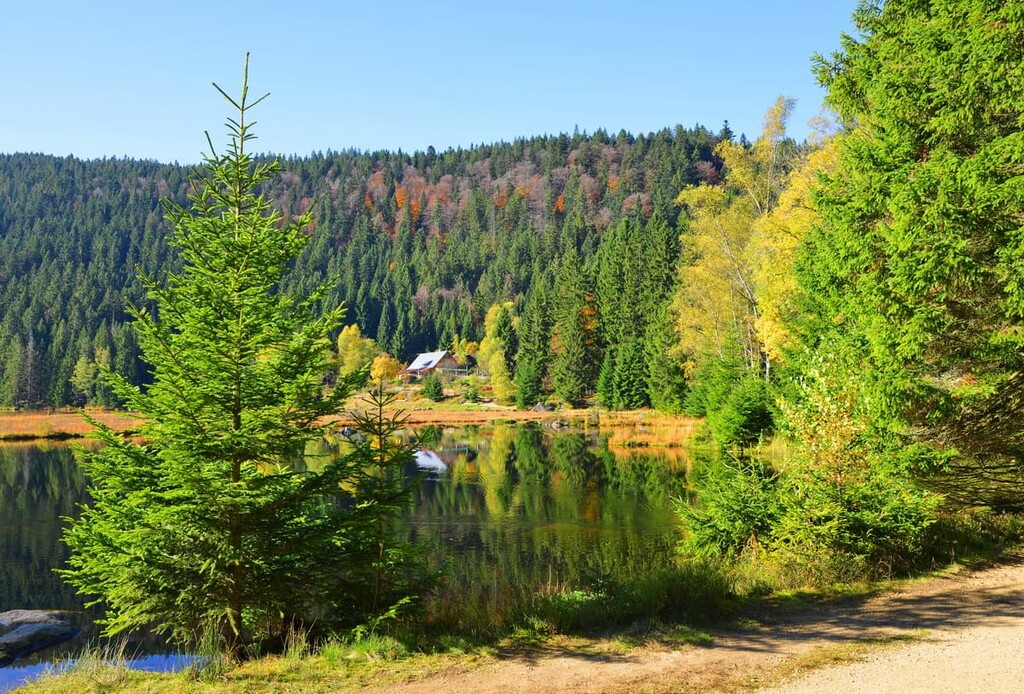
Looking for a place to stay near Bavarian Forest National Park? Here are some of the best cities and villages to check out in the region:
Directly west of the park lies the town of Deggendorf. The small town has a population of around 34,000 people with the first written record of humans in the area dating back to 868 CE. The town was relatively undamaged from World War II, making it the perfect place for a step back in time, thanks to its unique and charming architecture.
Deggendorf city square is full of small shops and cafes. Other popular sites include Schloss Egg Castle which dates back to the eleventh century, and Kloster Metten, a monastery built in 766 CE.
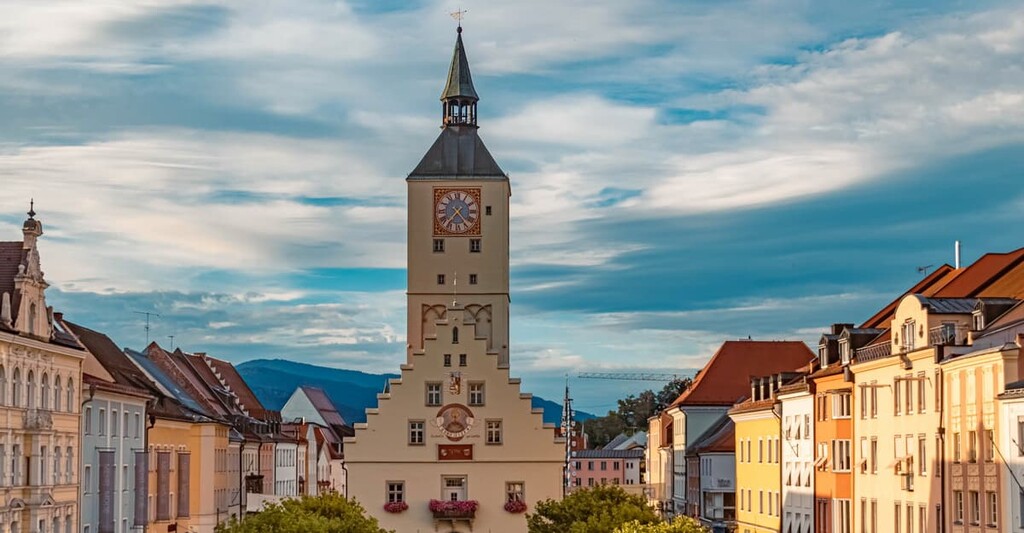
Regensburg is a city situated northwest of the park that has a population of over 150,000 people. The medieval region of the city is a UNESCO World Heritage Site and the city is one of the most visited places in all of Germany.
The Regensburg Cathedral dates back to the thirteenth century and towers above the Danube River. The Museum of Bavarian History is also situated in the city, allowing for a look into the history of the entire region. Other popular sites include Scots Monastery, Old Town Hall, and Old Stone Bridge.
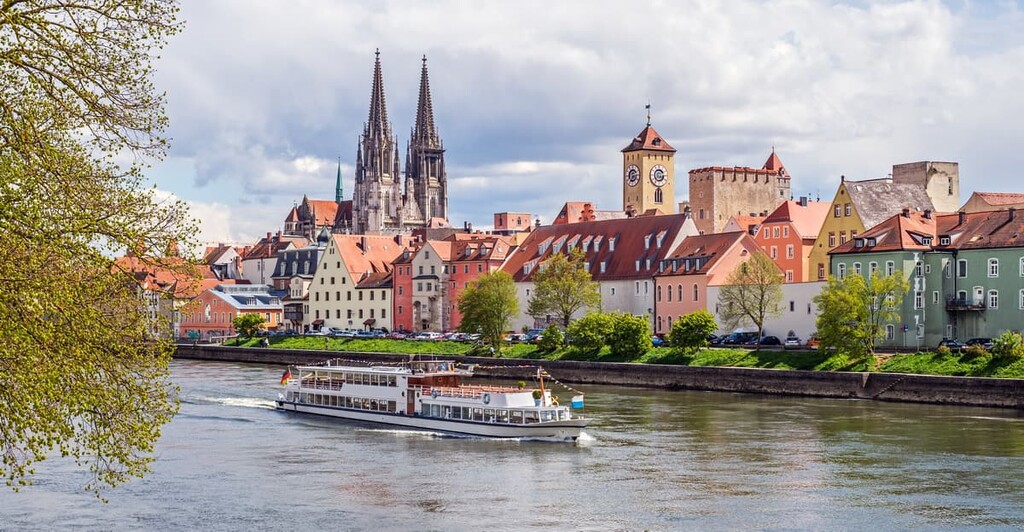
Explore Bavarian Forest National Park with the PeakVisor 3D Map and identify its summits.








